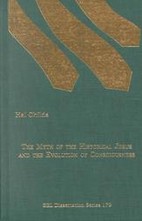 Hi there. If I don’t post again soon I’ll feel like I’ll have to introduce myself again. I’ve been taking time off mainly just to read, and especially to read a work that for me at least has been quite challenging. It’s full of coined concepts alongside esoteric ones: ontic as distinct from ontological; existentiell versus existentialia; historic versus historical; Dasein, Lichtung; “world” used not only as a noun but even as a verb; Jungian philosophy and psychology, Heidegger; “projection” but with a meaning fundamentally opposite from Freud’s meaning . . . I was labouring with a headache much of the time. But through it all I’ve come to at least work out (sort of) what Hal Childs is writing about in The Myth of the Historical Jesus and the Evolution of Consciousness.
Hi there. If I don’t post again soon I’ll feel like I’ll have to introduce myself again. I’ve been taking time off mainly just to read, and especially to read a work that for me at least has been quite challenging. It’s full of coined concepts alongside esoteric ones: ontic as distinct from ontological; existentiell versus existentialia; historic versus historical; Dasein, Lichtung; “world” used not only as a noun but even as a verb; Jungian philosophy and psychology, Heidegger; “projection” but with a meaning fundamentally opposite from Freud’s meaning . . . I was labouring with a headache much of the time. But through it all I’ve come to at least work out (sort of) what Hal Childs is writing about in The Myth of the Historical Jesus and the Evolution of Consciousness.
Childs is comparing John Dominic Crossan’s approach to understanding the historical Jesus with that of Carl Jung. Crossan, recall, is well known for scholarly tomes such as The Historical Jesus and many others, some of which I’ve discussed on this blog. Childs argues that scholarly efforts to understand the historical Jesus are essentially efforts to create new myths about the Christ figure that is so much a part of Western cultural heritage.
Hal Childs is certainly not arguing for a Christ Myth theory (or, as Raphael Lataster rightly points out, the term should be Jesus Myth theory since obviously the “Christ” is mythical to begin with). He is attempting to raise the readers’ awareness of the extent to which all historical “reconstructions” and narratives are themselves mythical. From one perspective I can understand his point well enough, but I do have fundamental disagreements with some of his views of history (and the postmodernist view generally) that I cannot address here.
But for now I would like to mention one point in particular that is central to his thesis. Childs sympathizes with Crossan’s expressions of “embarrassment” over the way scholarship has produced such a wild array of historical Jesus figures. Crossan blamed the lack of a sound historical methodology for this “embarrassing” state of affairs; Childs, however, blames something else. Or rather, he doesn’t so much as lay “blame” as he does offer thanks:
[M]ultiple historical-Jesus-images are an unavoidable necessity in the light of the narrative and mythic essence of history — as such, it is not to be struggled against but embraced. (p. 259)
As far as I can understand from reading Childs’ work he falls into the same confusion about the nature of historical evidence that most biblical scholars also do. He writes with the assumption that historical Jesus studies are no different, at their base line, than any other study of an ancient historical question. But there is a significant difference and I have addressed it many times here. The difference revolves around something that is so fundamental that I think many historians rarely stop to think about it consciously. In brief, the core difference is as follows: Continue reading “Recovering from a Postmodernist & Jungian Jesus Headache”
Like this:
Like Loading...

